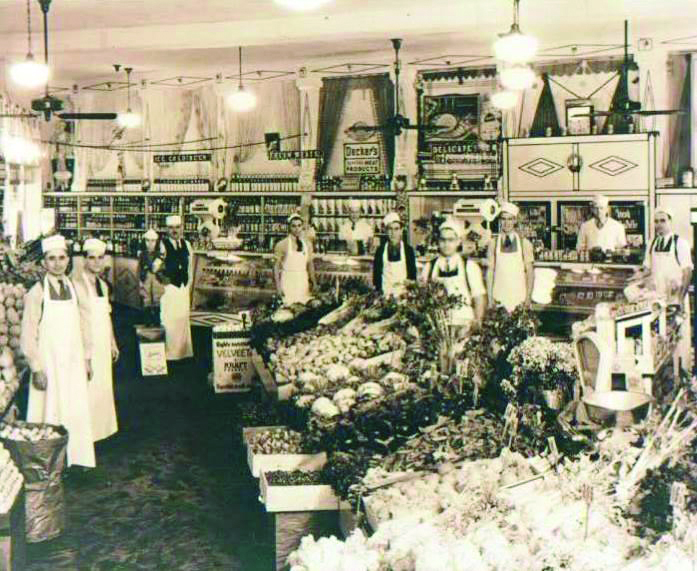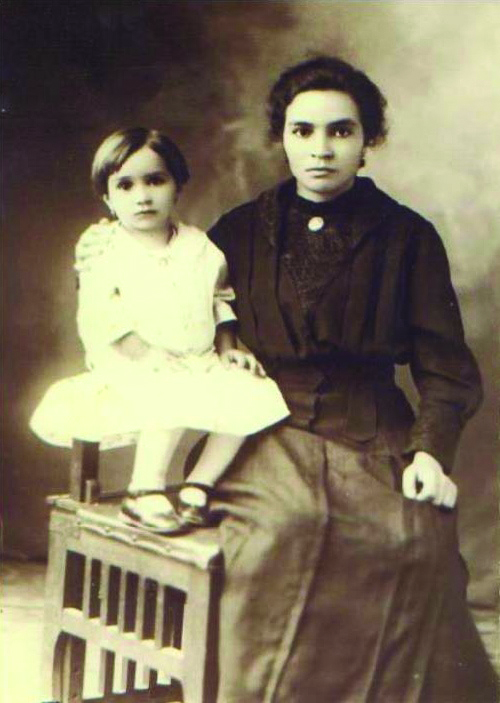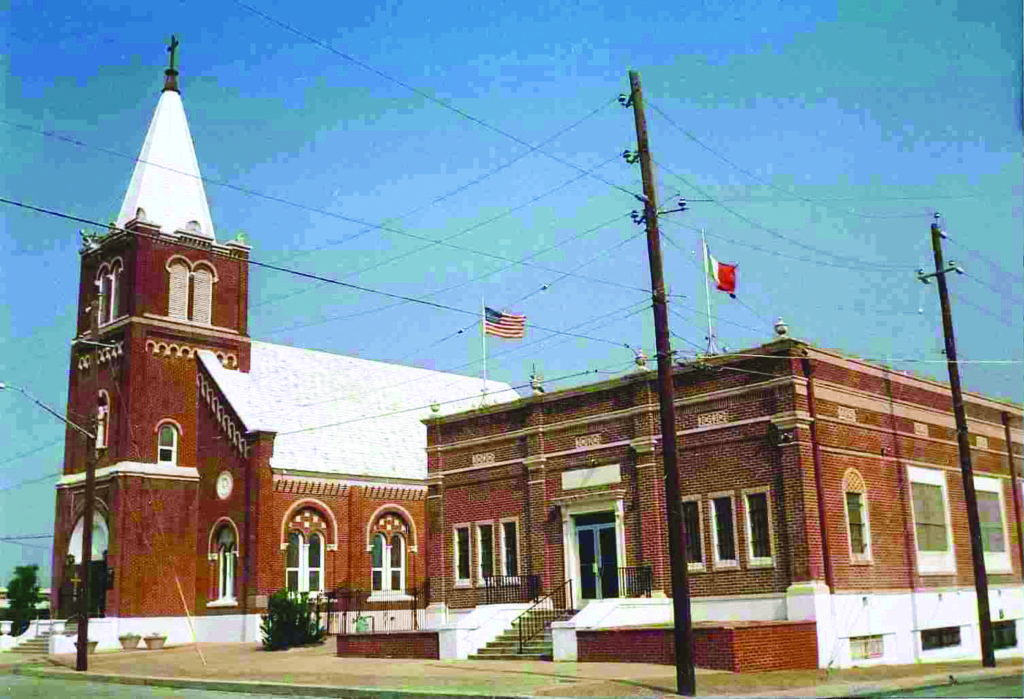Written by Carol Baass Sowa, for Today’s Catholic Newspaper
Frank Pantuso, 93, the son of Italian immigrants and author of two books on San Antonio’s Italian community, still struggles to comprehend what it must have been like for his father, Nicola Pantuso. Nicola, a shepherd, immigrated to America from the southern region of Calabria as a teenager in 1910 and never saw his parents again. “It’s almost unimaginable to me,” Pantuso says.
He surmises his father and the two brothers who immigrated before him, surely intended to make their fortune and return home. “The stories, at that time, were that in America the streets were lined with gold and the trees had silver hanging on them,” he relates. Ultimately, a series of world events – World War I, the Great Depression and World War II – prevented the Pantuso brothers from ever returning to their native land or being able to send for their parents.
Terrible socioeconomic conditions in southern Italy, the predominant region from which San Antonio’s Italian immigrants came, propelled them here as part of a massive wave of immigrants from southern and eastern Europe between 1880 and 1930. In those years, four and a half million Italians entered the United States. Eighty percent of these were from the southern regions.
For ages, southern Italy had existed as a land of warring city-states, frequently ruled by invaders. Garibaldi’s revolutionaries swept upward from the south to wrest Italy from foreign rule and unite its states in 1860, but this bloody struggle for unification did not bring peace or prosperity to the south, whose residents were looked down on by the industrialized north.
The vast majority in the south were landless peasants, barely able to eke out a living and defenseless against regular plagues of malaria and tuberculosis. They had little hope of escaping to America to improve their lot and, as conditions worsened, it was the tradesmen with marketable skills (carpenters, stonecutters, shopkeepers and the like) who saw an impoverished future if they stayed and, having the means to leave, departed for America.
Further spurring the immigration from Calabria was a series of natural disasters. The area had been plagued by volcanic eruptions and mudslides for centuries, but in December of 1908, a horrendous earthquake rocked the Strait of Messina for five days, bringing a tidal wave which wiped out towns and killed and crippled thousands on a scale never seen before. (To get an idea of what life was like for those who stayed, read My Cousin the Saint by Justin Catanoso, whose relative, St. Gaetano Catanoso (1879-1963), labored there as a priest.)
The Italian immigrants, long distrustful of outsiders, kept together with others from their region as they settled in various places in the United States and they continued to use their own dialects, rather than Italian. Calabrians settled in the Gulf Coast area, with a number establishing a community in San Antonio that was roughly 64 blocks centered around Martin Street, running from Santa Rosa Street to Our Lady of the Lake University. A smaller Italian neighborhood grew around Johnson Street, a mile south of downtown. The San Antonio immigrants continued to maintain their Calabrese dialect.
Especially noteworthy of the Italians was their method of aiding others from their province who could not afford the voyage. Many who had established businesses in America gladly financed passage for individuals and even families, with those brought over working in their benefactor’s business until their debt was paid. Nicola Pantuso’s ticket to America was paid for by a mine owner in Minnesota and he worked there for a year to repay his debt before joining his brothers who were already in warmer San Antonio.
Not all who came
Many of the San Antonio group became produce merchants, operating successful stores or selling fresh produce as street vendors. Louis (Luigi) Paletta came over as a laborer for Frank Talerico, who owned 15 fruit stands throughout the city, all operated by friends and relatives he brought over from Italy. When Paletta’s passage debt was paid a year later, he started his own fruit stand, expanding to multiple locations and, finally, his own grocery store. He too proudly served in the U.S. Army in World War I, gaining citizenship.
While earlier immigrant groups sometimes faced prejudices, the reverse was somewhat true for the Italians, who strongly disapproved of their offspring marrying non-Italians, and Frank Pantuso remembers neighborhood tongues wagging, as late as the 1940s, when an Italian girl married outside her ethnicity. The Italian custom of parents arranging marriages continued for some time as well. “The two mothers would get together and decide: ‘I like your son and my daughter’s ready to get married,’” Pantuso relates.
In 1926, with the city’s Italian population numbering 1,400, a request was made for an Italian priest who could minister to the Italian community in their native tongue and Archbishop Arthur J. Drossaerts invited Father Saverio Vecchio to preach a mission in Italian at San Fernando Cathedral. It was so well-received that a push for construction of an Italian church began, launched by the Christopher Columbus Italian Society (CCIS), founded in 1890 to assist Italian immigrant families in adapting to a new way of life. Father Vecchio became the church’s first pastor.
The CCIS proceeded to raise funds and purchased land on the downtown side of the larger Italian neighborhood, and San Francesco di Paolo Church was built and dedicated in 1927 at 205 Piazza Italia, with the CCIS building their hall next to it the following year, for social and cultural activities. Sadly, decades later, construction of I-10 and the I-35 interchange cut a swath through the area separating the church from its neighborhood. However, the desire to preserve the parish of their forefathers remains strong, and spiritual, cultural and social events continue on the premises.
In his book on the Italian community of San Francesco di Paolo, Pantuso notes the search for a better life for themselves and their families was the driving force behind the Italian immigration to San Antonio. “Their perseverance speaks loudly of their triumph over the unknown,” he wrote. “I feel that we of the succeeding generations have carried this heritage proudly and have given our children a sense of purpose and direction for their lifetimes.”
Resources: My Catholic Italian Community of San Antonio (1925-1941) and Italians of San Antonio (download both: www.ccis-satx.org), Frank Pantuso; My Cousin the Saint, Justin Catanoso; Texans One and All: The Italian Texans, the Institute of Texan Cultures. CCIS info: (210) 223-8284; officers@CCIS-satx.org.
We are all immigrants or descendants of immigrants. While today’s immigrants are of different origins than in the past, they are drawn to America and Texas for the same reasons our forefathers came.
Resources: My Catholic Italian Community of San Antonio (1925-1941) and Italians of San Antonio (download: ccis-satx.org), Frank Pantuso; My Cousin the Saint, Justin Catanoso; Texans One and All: The Italian Texans, Institute of Texan Cultures.

Local Italian produce stores 
Rachelina Granato Turano Pantuso & daughter Carmelina. Widowed at a young age, she later wed Nicola Pantuso. 
San Francesco di Paolo Church & Columbus Hall

